Bicycle Flea Market

Visiting Japan is fun, in part because I meet so many different cyclists. There are the cyclotourists, the randonneurs, the collectors…
Bicycle collecting as a hobby has a long tradition in Japan, and there are many events for collectors. The Keiokaku Bicycle Flea Market is one of them.

It’s a popular event that is held on the grounds of a Keirin race track on a weekend when there are no races there. The selection on display is amazing.

Looking for some rare JOS lights for your 1950s René Herse or Alex Singer? You’ll probably find them here.
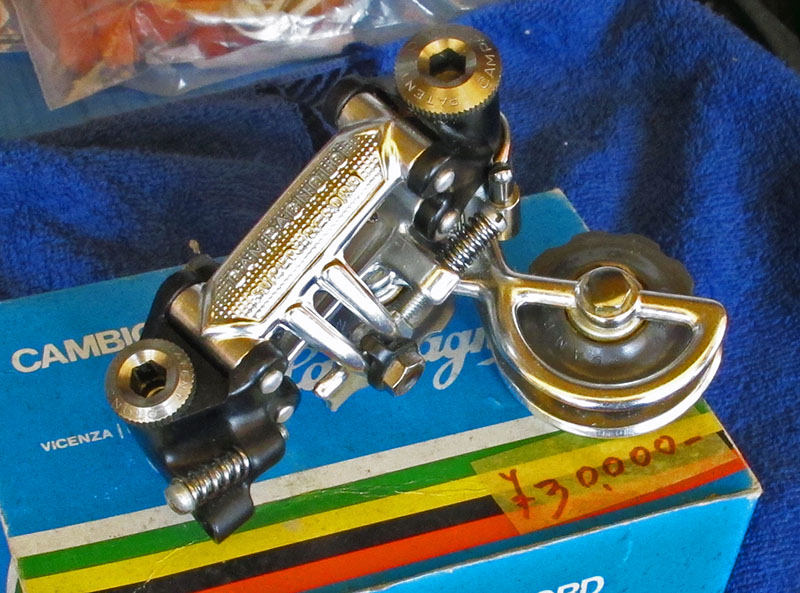
The first-generation Campagnolo Super Record derailleur was made only for a short time, so it’s ultra-rare. This one is brand-new, but with a twist: The date stamp on the body is incorrect. It appears that somebody found a few outer plates as spare parts and assembled these derailleurs. If you put it on a bike, few will notice, and the price is a bit more affordable than a genuine one.
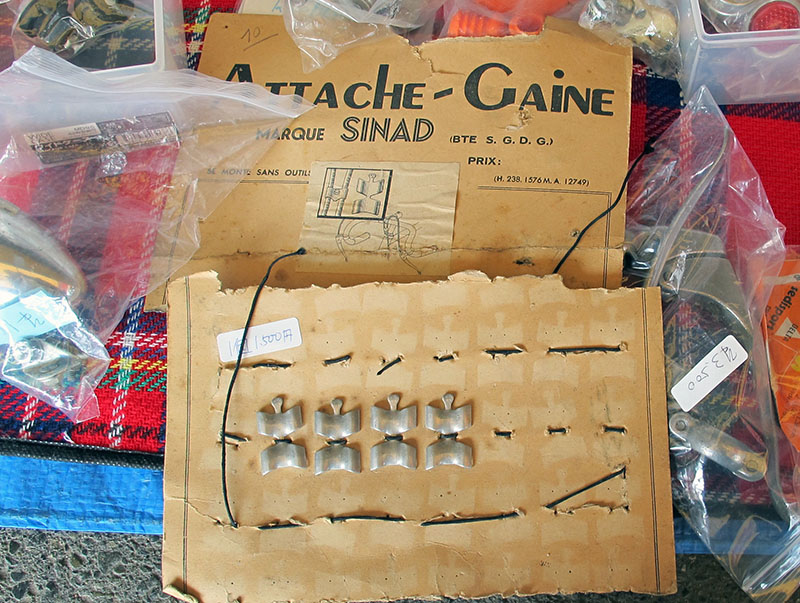
Much cheaper are these cable ties, used to tidy up the brake cables on traditional, non-aero brake levers. Here is how they work:

“No tools needed” – they just fold over. Never heard of Sinad? Neither had I.

Three generations of Dura-Ace cranks remind me of my early cycling years. That was a time when components still were getting more beautiful with every iteration. The oldest cranks are on the right, the classic 7400 model on the left, with the early 1990s one in the middle. These old gems don’t do the modern Shimano crank in the upper right corner any favors.
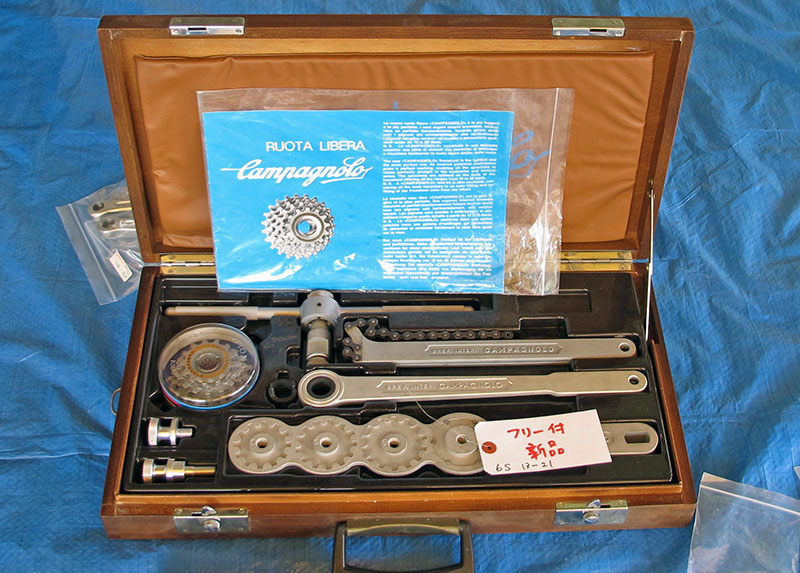
The Campagnolo freewheel is one of the craziest bike components ever made. It was superlight, with everything made from aluminum. It came in a wooden case, with its own set of beautifully made tools. I’ve never taken one apart, but old mechanics told me that the bearings ran straight on aluminum surfaces, so it really was suitable only for special events, because it wore out so quickly. But what a gem!

It was a time when everybody copied Campagnolo, so of course, the Dura-Ace freewheel cogs (made out of no-nonsense steel for durability) also came in a wooden case…
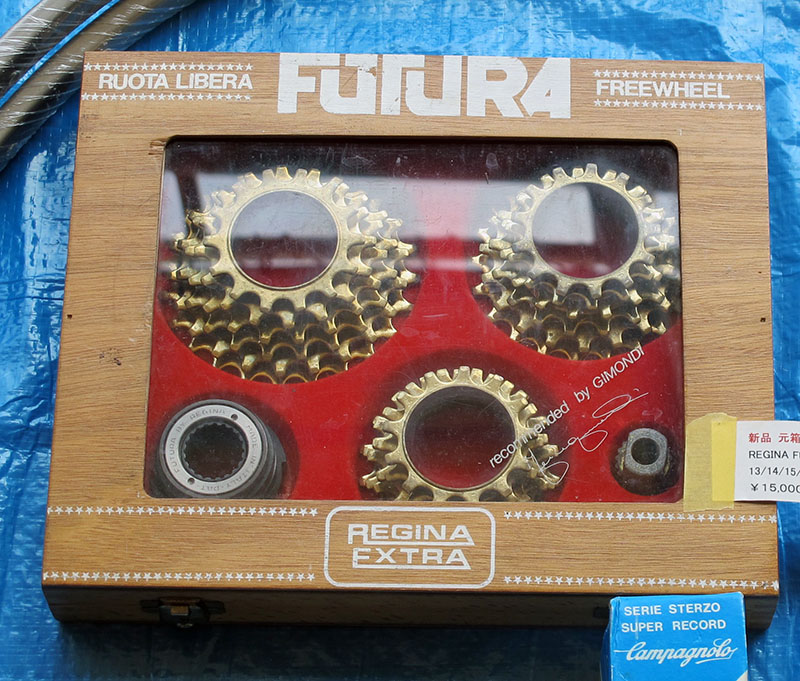
… as did Regina’s Futura freewheels. These are neat in that the freewheel body was installed on the hub the normal way, but the cogs could be removed by hand, making it easy to swap ratios.

And then you come across something totally unexpected, like this Mini-Mini-Velo that looks like it’s intended for a circus clown.
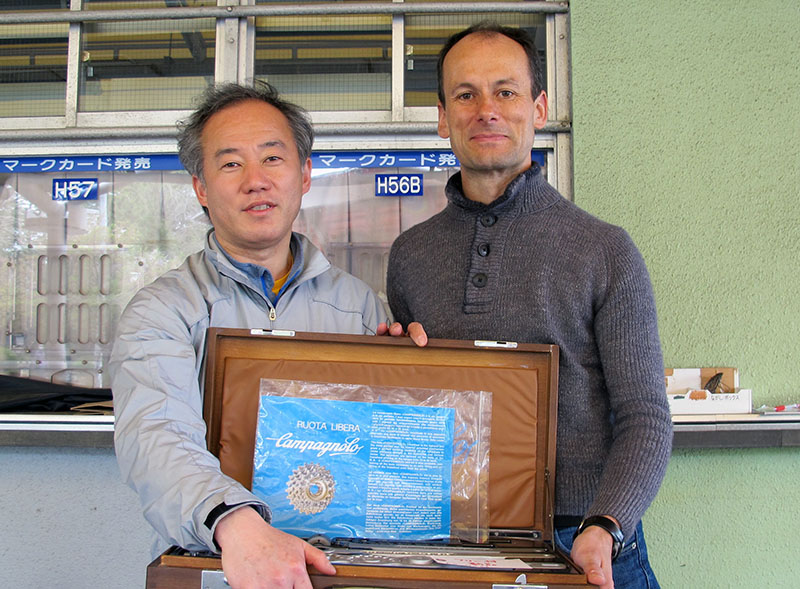
The best part about these events is meeting old acquaintances and making new ones. It was nice to see Hiroshi Ichikawa, one of the foremost experts on Campagnolo, with whom I had written an article detailing the development of the first Campagnolo rear derailleur more than 10 years ago.

It was also nice to meet Hideki Sasaki, whose illustrated catalogues of derailleur brands are a true labor of love. (We are currently working on an order from him – hurry if you want a copy of his books on Campagnolo, Simplex or Suntour.)
If you happen to be in Japan during the Keiokaku Flea Market (Spring and Autumn), it’s worth a visit!
Further information:
- Bicycle Quarterly 6 includes the story of the first Campagnolo derailleurs.
- Bicycle Quarterly 55 features three of Japan’s most amazing collections.
- Derailleurs of the World books.


